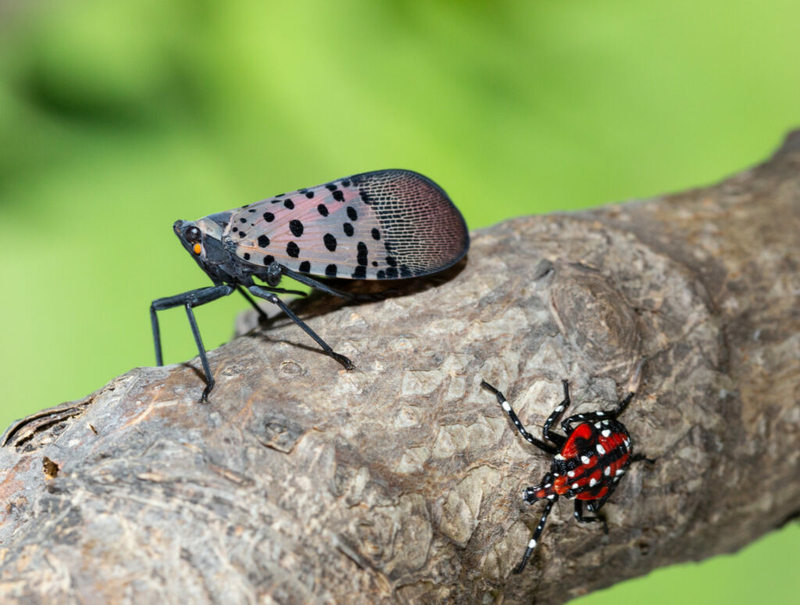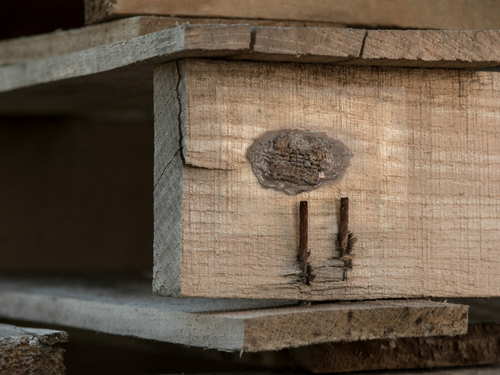Preparing for an invasive insect that is destructive to crops

The spotted lanternfly might not be here yet, but Washington officials are beginning to take steps to prevent the spread of the crop-damaging bugs.
Since first appearing in the U.S. in Pennsylvania in 2014, the invasive pest has quickly spread west, harming wine grapes, other crops and trees in its path. It’s now known to be in 14 states, as far west as Michigan.
Though the infestations are still far from Washington, it could take only one train or truck carrying the insects’ hard-to-spot egg masses for spotted lanternflies to begin spreading here. That would be a potentially disastrous threat to Washington wineries, orchards and hop farms, which produce billions of dollars worth of crops each year.
The state Invasive Species Council is trying to get ahead of the insect. The council is almost done with an action plan for dealing with the lanternfly. It will meet at 1 p.m. on Monday to present the plan, hear from national lanternfly experts and discuss how to proceed.
Experts say preparation is the most important step to prevent the insect’s spread. But there are unknowns, as every state is different and how the pests conduct themselves can vary.
“We just don’t know how it will act when it gets to some of these places,” said Matthew Travis, national policy manager for the U.S. Department of Agriculture’s spotted lanternfly program.

Preventing the bug and its egg masses from traveling along on vehicles and cargo is a key to containing it. Lanternflies are not long-distance fliers. Instead, a common mode of transport into new areas is hitchhiking by latching onto objects like railcars or pallets.
Once active, lanternflies feed on the green vascular tissue of plants, especially fruit, certain trees and a number of other agricultural products. This relentless sap sucking weakens plants, draining critical nutrients they need to survive and in some cases killing them or making produce unfit for sale.
One of the pests’ favorite hosts is the fast-growing and invasive “tree-of-heaven,” but they are also known to enjoy grape vines, which has been devastating for some wineries in other states.
The Washington State Department of Agriculture has already responded to reports of the insects in Washington, though all have turned out to be negative.
How to prevent the spread
One of the best ways to ward off an infestation is to spot and destroy egg masses, which tend to look like a smudge of mud. Scraping or smashing the masses, dousing them with water or treating them with pest spray can all be reliable destruction options.
Once the pests grow, fighting them becomes more complicated. Insecticide can help. Some scientists have also begun using backpack vacuums to suck up adult bugs, a solution that the Washington Department of Agriculture said worked well on the invasive northern giant hornet.
Travis said battling the insect tends to involve a combination of techniques.
In Washington’s draft lanternfly action plan the state is preparing for an emergency response, with a new advisory group and funding, if an infestation becomes severe enough.
The state’s plan to prevent the spread could include measures like destroying affected plants or products or introducing “biosecurity” measures, such as cleaning vehicles or quarantining areas where there are suspected infestations.
The state Department of Agriculture could also consider restricting the movement of goods that might carry the bug from certain agricultural sites or regions it has spread to. But the plan acknowledges that this could have negative economic consequences.
The plan also discusses the possibility of “biological controls,” meaning finding other living things that can kill the insects. But so far in the U.S., the lanternflies appear to have few major predators. Researchers have looked at tiny parasitic wasps and fungal pathogens as options for combatting the bugs. The report acknowledges that further study is needed in this area.
Taking out the insects’ favorite hosts – the tree-of-heaven, formally known as Ailanthus altissima – could also help slow the spread. Washington’s action plan discusses a number of options for doing so, including manually pulling trees or using an herbicide to kill them.
Threat to the economy
Washington faces some of the greatest known risks from lanternflies in three main sectors: wine and grapes, tree fruit and hops.
The fallout for the wine industry from the bug could be “significant” due to the sector’s size. According to the action plan, Washington has almost 60,000 acres of wine grapes and 400 wine grape growers. The industry sold $2.5 billion of wine in 2021.
Tree fruit could also take a hit, especially if there are changes with growers’ costs and or avenues for exporting fruit. Apples alone in Washington are valued at around $3 billion annually after packing, the report says.
Lanternflies can damage hops as well, another valuable Washington crop.
The bugs can also be a nuisance outside of agriculture. Even though they don’t bite or carry human diseases, they can appear in swarms, leaving people annoyed and grossed out. And as they feed, they can drip a sticky excrement, called honeydew, that attracts other insects, including wasps and ants, while also creating conditions ripe for mold.
One of the most important mitigation measures is to make sure members of the public know what spotted lanternflies and their egg masses look like and to report sightings.
As the pest continues to spread across the country, scientists and researchers will learn more about how it moves and how to kill it. For now, there’s only so much a state can do to prepare.








